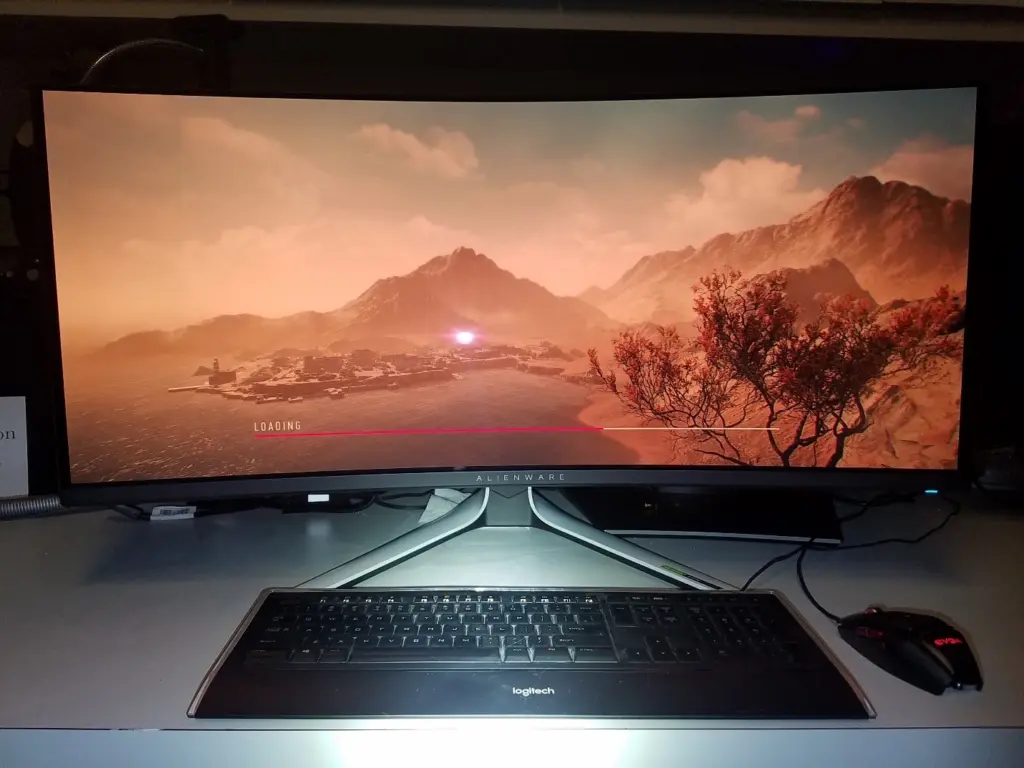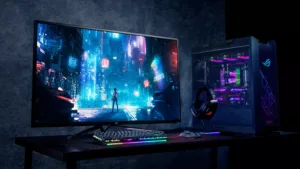Jon Peddie did a review of the Dell Alienware AW3423DWF gaming monitor back in November, 2023, and it won our rave review. Peddie said of the monitor that if you’re looking for a super fast gaming monitor that will match your reflexes and take advantages of AMD’s Boost, Intel’s Game Fast, or Nvidia’s Reflex, the Alienware 34 Curved QD-OLED Gaming Monitor is the monitor for you. If you want a brilliant HDR ray-traced image, then the new monitor is what you’ve waited for. I’ve wanted this kind of monitor for years. Now I want it wider (49 inches will do) and with more lines (2,160 would be nice). I know that’s coming but probably not for two years.

I noticed that TechSpot had a recent roundup, and the same monitor came out on top so, that seemed like validation that was worth pointing out, but it is also a pretty comprehensive roundup of 13 competitors that should warm the hearts of Display Daily readers.
Peddie did say that to appreciate the true value of the OLED displays someone would have to be able to see it side-by-side with next to a regular monitor, but that’s not ever going to be practical. It is a big drawback for displays that consumers can’t really get that experience because, at the end of the day, no matter how many reviews you read, nothing beats that wow factor that you get with OLED displays when you compare them to the alternative. It may still be a subjective experience, but it’s not about what you get but what you see and the hardest part of selling new display technology is to be able to show enough comparisons to consumers that they truly appreciate the value of refreshing their monitors.
| Rank | Monitor | Key Points |
|---|---|---|
| 1 | Dell Alienware AW3423DWF | 34-inch QD-OLED, strong overall performance, recent firmware update improved HDR accuracy, great value, takes the top spot. |
| 2 | Asus ROG Swift OLED PG27AQDM | 27-inch 1440p 240Hz, excellent panel, bright HDR, excellent value, slight preference for QD-OLED. |
| 3 | Samsung Odyssey OLED G8 | 34-inch 3440 x 1440 QD-OLED, great design, good HDR accuracy, calibration options, bright, higher price compared to some. |
| 4 | LG 27GR95QE | 27-inch 1440p 240Hz, good brightness, accurate HDR, better value, slightly behind top 3 in performance. |
| 5 | MSI MEG 342C QD-OLED | 34-inch QD-OLED, good HDR, brightness, HDMI 2.1, lower price, not the best but strong overall package. |
| 6 | LG C2 42″ | 42-inch model, good value, limited gaming features compared to smaller OLEDs, good performance at its price point. |
| 7 | Alienware AW3423DW | 34-inch QD-OLED, good 3440 x 1440 175Hz panel, good HDR calibration, firmware issues, fan behavior, input latency. |
| 8 | Asus ROG Swift PG42UQ | 42-inch 4K WOLED, bright, high refresh rate, lacks some features compared to LG C2, lower price makes it more recommendable. |
| 9 | Corsair Xeneon 27QHD240 | 27-inch 1440p 240Hz, good factory calibration, mediocre brightness, not great for HDR, reasonable price. |
| 10 | Philips Evnia 34M2C8600 | 34-inch QD-OLED, janky HDR accuracy, high price, good sRGB calibration, Ambiglow RGB LED integration. |
| 11 | Acer Predator X27U | Good 27-inch panel, weak HDR accuracy, mediocre brightness, firmware quirks, higher price. |
| 12 | LG C1 48″ | 48-inch size limits usability, good brightness, features, and price but size is a drawback. |
| 13 | Gigabyte Aorus FO48U | 48-inch size not recommended for most desks, fewer features compared to LG C1, higher price. |
| 14 | Corsair Xeneon Flex 45WQHD240 | Low pixel density, poor text clarity, expensive, not recommended for most users. |

